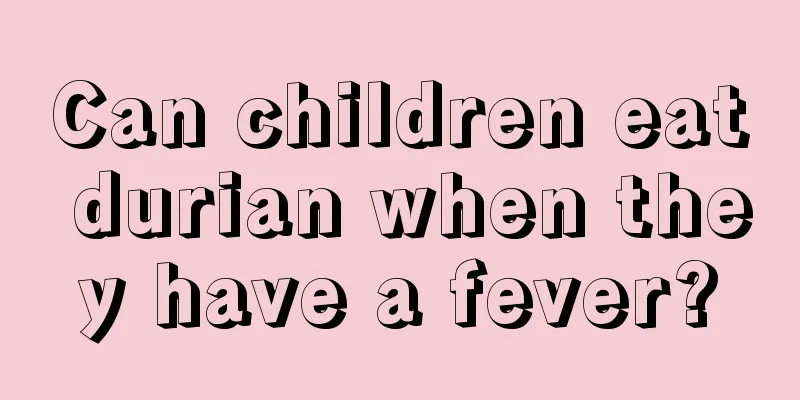What to do if a baby girl has hernia

|
Many girls are particularly prone to hernia. Hernia means that some cells or organs in our body tend to deviate from their normal anatomical position, leading to the formation of weak points. This is very serious, so it must be treated actively, especially for some children. If they get hernia, the future development of their organs will be affected. So what should be done with hernia in baby girls? Hernia should not be ignored Although hernia is not a serious disease, if left untreated, it can have adverse effects on the baby. 1. Hernia first affects the baby's digestive system, which can easily cause lower abdominal distension, bloating, abdominal pain, constipation, poor nutrient absorption, fatigue and physical deterioration. 2. Since the groin area is adjacent to the urogenital system, the normal development of the testicles of male babies may be affected by the squeezing of hernia. 3. Because the intestines or omentum in the hernia sac are easily squeezed or collided to cause inflammatory swelling, the hernia cannot return to its original position, resulting in hernia incarceration (stuck there, affecting blood flow), as well as dangerous situations such as intestinal obstruction, intestinal necrosis, and severe abdominal pain. Types of Qi There are two types of hernias: those that occur in the navel are called umbilical hernias, and those that occur in the groin are called inguinal hernias. The main reason for hernia is due to defects in embryonic development. In layman's terms, there is a membrane inside the human body that covers various organs. However, if this membrane is not fully developed or has loose places, softer things such as large and small intestines can easily slip out from this gap. They are most likely to slip out when the baby is crying or coughing. Inguinal hernia One time when the mother was changing her baby's clothes, she suddenly found a piece of "flesh" protruding at the root of the baby's right thigh. It felt soft to the touch and went back after pressing a few times. The baby did not have any symptoms of discomfort. When taking the baby to the hospital for a checkup, the mother consulted the doctor, who said, "This is an inguinal hernia." What does an inguinal hernia look like? Inguinal hernia is a fairly common pediatric disease with an incidence of about 3%, and the chance of occurring in boys is about 5-10 times that in girls. Premature babies and babies with high intra-abdominal pressure are more likely to develop inguinal hernias, such as babies who are often constipated. A lump or bump is found in the groin area, and sometimes even swells up to the scrotum area. Most of these lumps appear after crying, coughing, sneezing, standing for a long time or strenuous exercise, but they will disappear naturally after lying down or resting. Sometimes you need to press them back with your hands. The pain caused by a simple hernia is usually not severe, but if there is persistent severe pain in the groin, the lump cannot be pressed back, and the symptoms persist for two or three days, it may be due to necrosis of the fallen intestines, fallopian tubes, etc. This is a very serious complication and can be life-threatening. |
<<: The baby of more than ten days old keeps sneezing
>>: What to do if your baby has hernia in one month
Recommend
White discharge from baby girl
Most baby girls will have white secretions after ...
How to treat children's stuttering effectively
Many children develop stuttering if they do not l...
What to do if baby has intestinal gas? Here are some ways to deal with it!
The gastrointestinal function of infants is not y...
What to do if your four-year-old baby has a stomachache
When taking care of your baby, you must do it in ...
What causes vaginal bleeding in children?
Vaginal bleeding is related to age and whether yo...
The advantages and disadvantages of pediatric massage
Pediatric massage is recognized by more and more ...
How can I relieve eczema on my baby’s eyebrows?
It is very uncomfortable for a baby to have eczem...
Parents should understand the symptoms of baby allergies!
A baby's body is relatively fragile and has l...
What should I do if my child keeps coughing?
Constant coughing is a common problem for many pe...
How to care for newborn baby with bleeding navel
Many parents find that their newborns have bleedi...
What should I do if my child has ulcers in his mouth?
Children are very prone to oral ulcers, which is ...
What should I do if my child has a stuffy nose? Tips for solving children's nasal congestion
When the weather is cold or the temperature chang...
What to do if a child has mumps and a fever
Summer is the peak season for mumps in children. ...
What to do if your two-year-old baby drools
It seems that every baby will drool. Some droolin...
Why does a child have a fever, convulsions and rolling eyes?
Generally, family members are most concerned abou...









